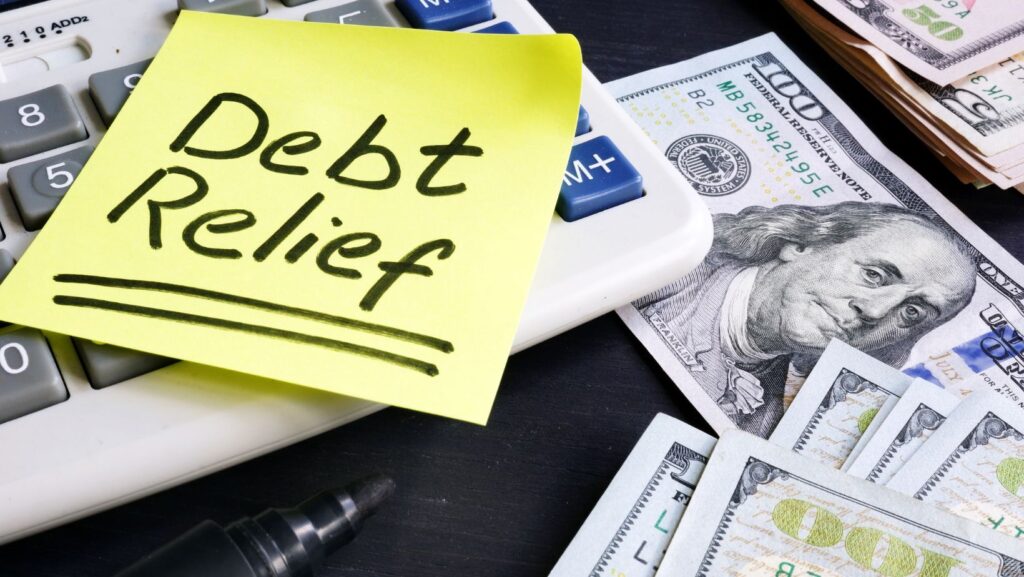Have you ever asked yourself what options are available when you want to get back on track with your finances?
In Canada, two common paths people look at are bankruptcy and debt relief. Both are structured ways to help individuals manage money challenges, but they are not the same.
Each has its own approach, purpose, and outcome. To understand them better, it helps to look at how they work, what makes them different, and when they might be considered.
What is Bankruptcy in Canada?
Bankruptcy in Canada is a formal process that gives individuals a structured way to deal with debt. It is managed under Canadian law and follows clear rules to ensure fairness for both the individual and the creditors.
People who choose bankruptcy are not left alone in the process. They are guided step by step so that everything is done properly and responsibly.
Bankruptcy has one key role: to provide a reset that allows individuals to move forward with a fresh start. It takes into account a person’s current situation and ensures that they are able to rebuild without being weighed down by unmanageable payments.
Main Features of Bankruptcy
- It is a legal process that follows Canadian regulations
- It provides a structured way to deal with debt responsibly
- It gives individuals a chance to reset and focus on the future
- It ensures fairness between the person and the creditors
These points show that bankruptcy is not about loss but about creating a fair and balanced way to manage obligations.
What is Debt Relief in Canada?
Debt relief is a broader term that includes many options designed to make payments easier. In Canada, debt relief can take several forms, such as consolidation, repayment plans, or negotiated settlements.
Unlike bankruptcy, which is a legal process, debt relief is often more flexible. It gives people different tools they can use depending on their financial needs and preferences.

Debt relief is about making sure individuals have practical choices that fit their lifestyle. It helps people manage money without stress by offering solutions that reduce payment amounts, simplify schedules, or create new repayment terms.
Main Features of Debt Relief
- It can include consolidation or repayment plans
- It focuses on making payments easier and more organized
- It gives flexibility depending on personal needs
- It supports long-term financial planning and balance
These features highlight how debt relief offers Canadians multiple paths to make their financial lives smoother.
Bankruptcy vs Debt Relief: Key Differences
Although both bankruptcy and debt relief aim to support financial stability, the way they work is different. Bankruptcy is a structured legal process with clear rules, while debt relief refers to flexible solutions that help reduce or reorganize payments.
The main difference lies in how formal each option is. Bankruptcy involves a defined process that is recognized by Canadian law, while debt relief gives more freedom to adjust things based on personal situations. Both approaches lead to the same positive outcome—helping people take control of their finances.
Differences at a Glance
- Formality: Bankruptcy is legal, and debt relief is more flexible
- Approach: Bankruptcy resets obligations, and debt relief adjusts them
- Focus: Bankruptcy gives a fresh start, and debt relief provides smoother management
- Suitability: Bankruptcy fits those who need a reset, and debt relief fits those who want easier repayment
By looking at these differences, it becomes clear that both options serve their purpose depending on what a person needs.
When to Consider Bankruptcy in Canada
Bankruptcy is usually considered when someone feels that their current payments are not manageable through other means. It is a responsible choice for those who want a structured process that clears obligations and gives them the space to rebuild. Canadians who choose bankruptcy often find relief in knowing that the process has clear rules and leads to a fresh start.
Signs Bankruptcy Might Be the Right Choice
- You want a structured and legal reset of your obligations
- You prefer a process that clears the way for rebuilding
- You value having clear steps laid out under Canadian law
- You want a fair arrangement for both you and your creditors
These signs show that bankruptcy can be a positive step when the goal is a clear, structured path to financial recovery.
When to Consider Debt Relief in Canada
Debt relief is often the right choice for people who want to stay in control of their payments but need them to be more manageable. It works well for Canadians who want to simplify things, reduce payment amounts, or adjust their schedules without going through a formal legal process.
Debt relief also appeals to those who want flexibility and prefer to keep their options open. It gives individuals more control in how they handle their obligations while still ensuring progress toward financial stability.
Signs Debt Relief Might Be the Right Choice
- You want to combine payments into one easy plan
- You prefer flexible options instead of formal processes
- You want to reduce monthly amounts for a better balance
- You like having control over how you handle your obligations
These points show why debt relief works well for Canadians who want simpler ways to manage money.
Benefits of Bankruptcy and Debt Relief
Both bankruptcy and debt relief share one important goal: to give individuals a chance to manage obligations and focus on the future. The benefits of each option may look different, but both lead to positive outcomes.
Benefits of Bankruptcy
- Provides a complete reset of obligations
- Follows a structured legal process for fairness
- Offers peace of mind through clear steps
- Allows individuals to focus on rebuilding
Benefits of Debt Relief
- Offers multiple flexible solutions
- Simplifies payment schedules
- Reduces stress by lowering obligations
- Supports long-term financial planning
By comparing the benefits, Canadians can see that both bankruptcy and debt relief bring positive results in different ways.
How to Choose Between Bankruptcy and Debt Relief
Choosing between bankruptcy and debt relief depends on personal circumstances. The decision comes down to what you value most: structure and a reset, or flexibility and adjustment. Both are positive choices, and both give Canadians the chance to improve their financial health.
A good way to approach the decision is to look at your goals. If your priority is to start fresh with a clear path, bankruptcy may be suitable. If your priority is to manage payments with more flexibility, debt relief may be a better fit. Either way, both options lead to financial stability when used responsibly.
Things to Consider Before Choosing
- Your current income and expenses
- The number of payments you are managing
- Your preference for structure versus flexibility
- Your long-term financial goals
Looking at these factors makes the decision easier and ensures that the choice fits your lifestyle.
The Future of Financial Stability in Canada
As more Canadians look at options for financial support, both bankruptcy and debt relief will continue to be important tools. They provide reliable ways for individuals to manage their obligations and keep their futures secure. With clear options available, Canadians can make informed choices that fit their needs and goals.
Positive Impact on Canadians
- Creates a sense of control over financial life
- Provides tools to manage obligations responsibly
- Builds confidence for long-term planning
- Supports healthier financial habits
These points show that both bankruptcy and debt relief are not just about today but also about building a balanced future.

Conclusion
Bankruptcy and debt relief in Canada are two strong options that help people manage obligations in positive ways. Bankruptcy provides a legal, structured reset, while debt relief offers flexible solutions to simplify payments. Both paths give Canadians confidence, balance, and a way to focus on long-term goals. By understanding the key differences and considering personal needs, individuals can choose the option that fits them best. In the end, both bankruptcy and debt relief are designed to help Canadians take control of their finances and move forward with clarity and peace of mind.



